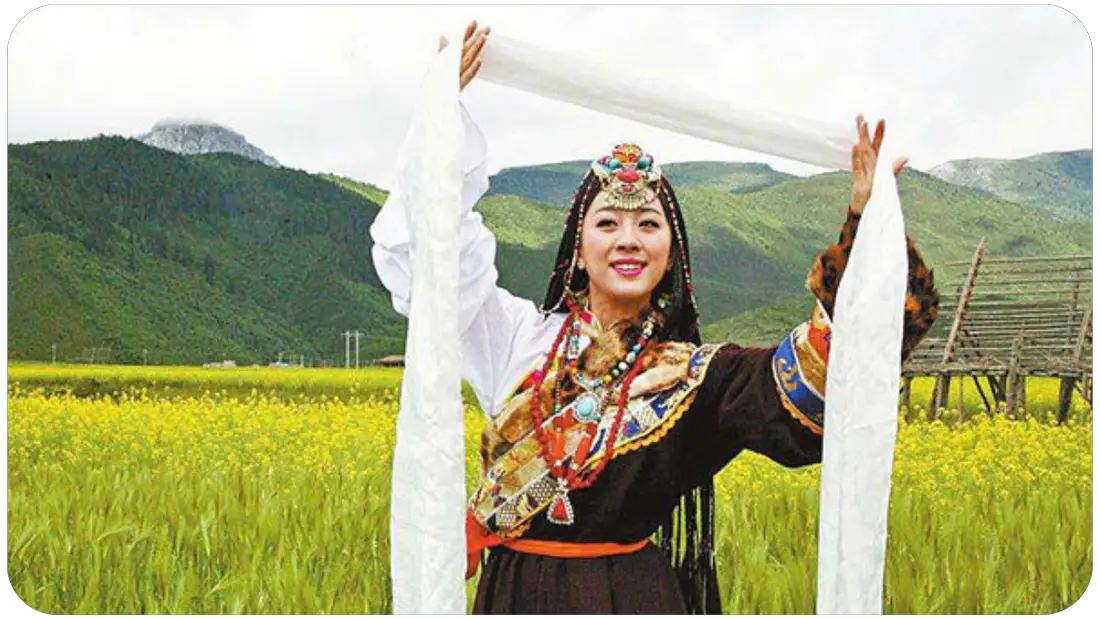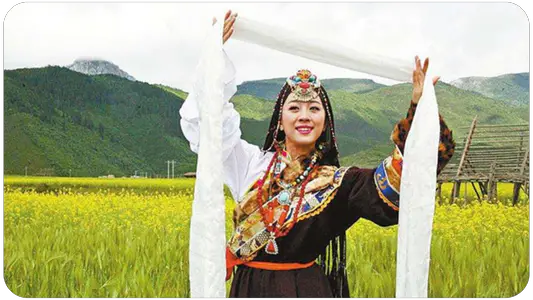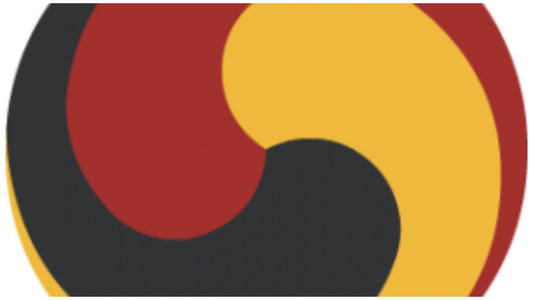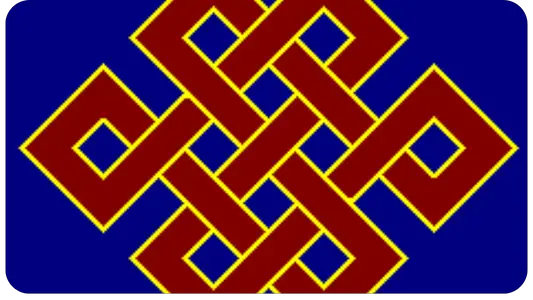A khata (Tibetan) or khadag (Mongolian) is a traditional ceremonial scarf used in Tibet and Mongolia. It symbolizes good will, favor and compassion and is usually made of silk.
Tibetan khadags are usually white with which it symbolizes the pure heart of the giver, although yellow or gold colored khadags are also regularly given. Mongolian khadags are usually blue symbolizing the sky.
The khata is a versatile gift. It can be given to the host or hostess on any festive occasion, such as birth, marriage, funeral, graduation, attainment of higher position in Tibetan Buddhism or work, arrival and departure of guests, etc.
Tibetans generally give it in recognition of tashi deleg (good fortune) at the time it is bestowed. In Mongolia, khadags are often tied to an ovoo, stupa or to special trees or stones.
Dalai lama Tenzin Gyatso is known for his gifts of khadags to diplomats, guests or other monks, symbolizing purity and the intention of the beginning of a new relationship. Generally, lamas or government representatives are given khatas before they are asked for help, for example.
In these cases, the khata symbolizes that the request is free of negative thoughts or motives. Conversely, a lama may also offer a khata to his students or guests, or a lama may be presented with a khata and the lama returns it.
Thanks to the German painter and children's book and travel writer Fritz Mühlenweg, the khata has been used by many German scouting organizations since 1954.
Khatas are divided into eight types:
Khatas in three different sizes, made of silk with Buddhist symbols woven in
Mongolian khatas in light blue
Ashi khata out of pure silk
Subshi out of cotton
Sothar
Khachi





